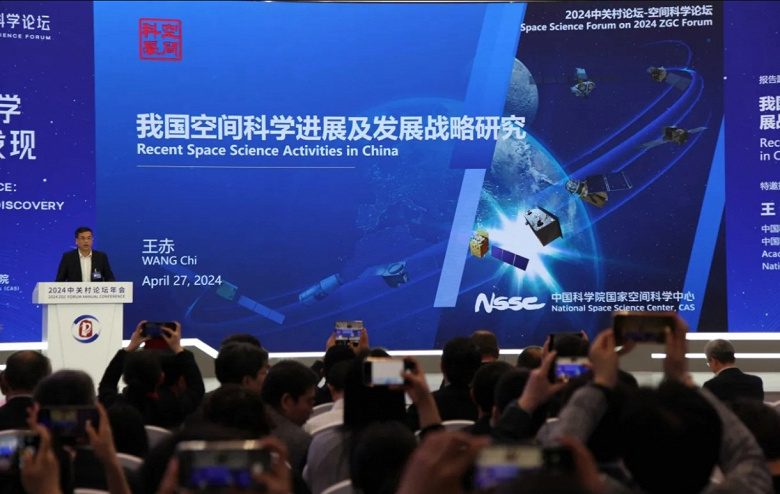Lunar observatories will bring the Celestial Empire to the forefront of space science
The Chinese Academy of Sciences (CAS) announced the launch of a new batch of diverse advanced space missions, demonstrating the country's ambitious plans for space exploration.
Initiatives covering lunar far side astronomy, astrophysics, exoplanet search and solar exploration are designed to place China at the forefront of astronomical research and space exploration. CAS National Space Science Center (NSSC) Director Wang Chi presented details of these missions at the annual Zhongguancun Forum on April 27.
Among selected missions:
1. «Opening the sky at the longest wavelength» (Discovering the Sky at the Longest Wavelength, DSL). The mission consists of 10 small satellites launched into lunar orbit. Nine of them and an automatic interplanetary station will use the Moon as a shield from Earth's electromagnetic interference to pick up ultra-long-wave signals from the early Universe.
2. «Improved X-ray synchronization and polarimetry» (Enhanced X-ray Timing and Polarimetry, eXTP). It is a powerful X-ray observatory for observing the sky, studying gravitational waves, neutrino sources and extreme states of matter, gravity and magnetism.
3. ExoEarth Survey («Earth 2.0») — mission to search for terrestrial planets and wandering planets using transit, photometry and microlensing techniques.
4. Solar Polar Orbiting Observatory (SPO), to study the poles of the Sun from an orbit inclined more than 80 degrees to the ecliptic plane.
5. «Tai Chi» (Taiji). A mission in which three spacecraft in heliocentric orbit form an ultra-long base of 3 million kilometers to detect medium and low frequency gravitational waves, studying the nature of gravity and space-time.
These missions are part of the expected third CAS Strategic Priority Program (SPP III), although they may be merged into a new space science program. Proposals were selected from the earlier 2022 SPP III candidate pool.
None of the proposed missions related to exoplanets and Earth have been selected yet. However, the likelihood of selecting one or more such missions, such as a mission to Venus, within a separate direction remains high, given the strong interest of the Chinese planetary science community.
The new mission package will be a continuation of the first two rounds of the Chinese Academy of Sciences (CAS) Strategic Priority Program (SPP). The first round of SPP, launched in 2015-2017, included missions such as a probe for dark matter search DAMPE, X-ray observatory HXMT, return satellite Shijian-10 and quantum experiments on a cosmic scale (QUESS).
The second round of SPP included the Einstein probe, launched earlier this year to study gravitational waves, and the upcoming Solar Wind Magnetosphere-Ionosphere Link Explorer mission. raquo; (SMILE) in collaboration with the European Space Agency. Also in recent years, the «Electromagnetic Monitor all sky» (GECAM) and «Advanced Space Solar Observatory» (ASO-S).
In parallel with new ambitious scientific missions, China is preparing for the May 3 launch of the Chang'e-6 mission from the Wenchang Satellite Launch Center. on the delivery of soil samples to Earth from the far side of the Moon.

